




 Karl Lofts, Shap probably
Karl Lofts, Shap probably
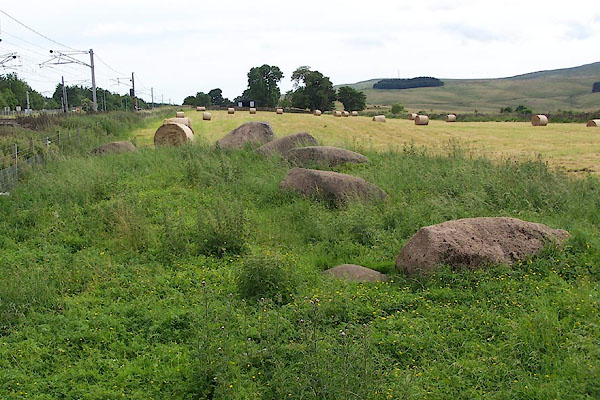
BJQ27.jpg (taken 13.7.2005)
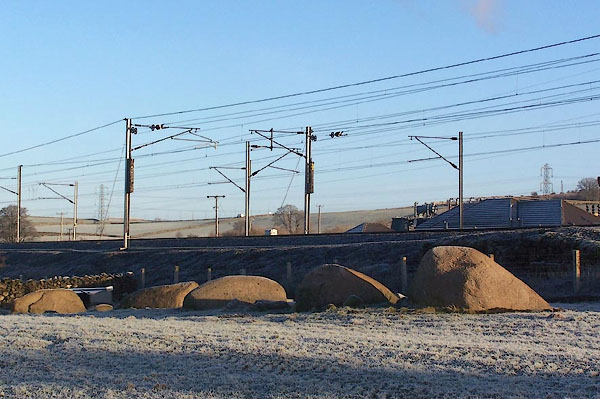
BLN10.jpg (taken 4.1.2006)
placename:- Druidical Circle
"Druidical Circle (Remains of)"
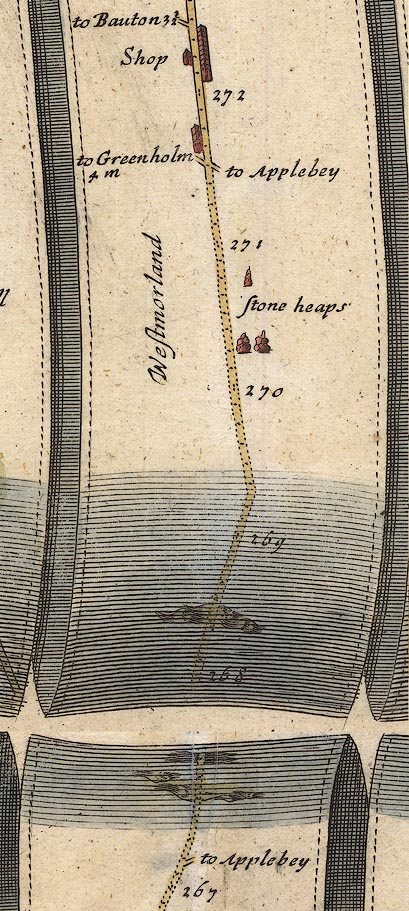
OG38m267.jpg
In mile 270, Westmorland. "stone heaps"
Three piles of stones, like cairns? drawn by the road.
item:- JandMN : 21
Image © see bottom of page
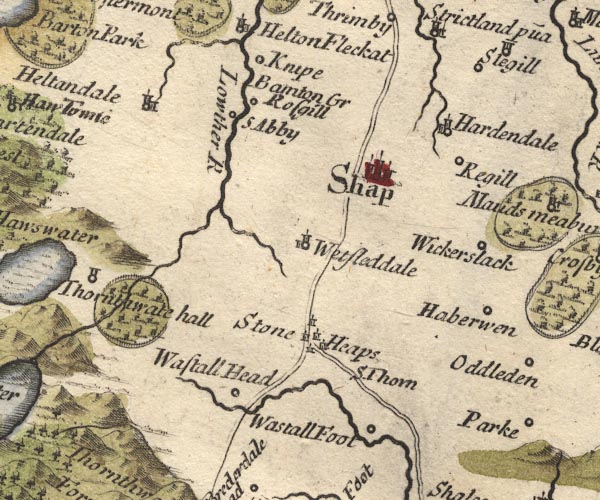
MD10NY51.jpg
"Stone Heaps"
Group of little tower symbols around the junction of the Kendal Shap road and Shap Orton road.
item:- JandMN : 24
Image © see bottom of page
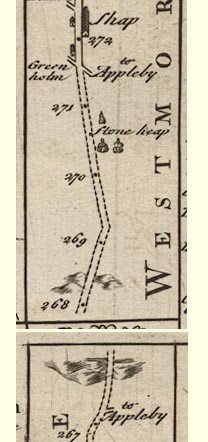
B094m267.jpg
"Stone heap"
3 heaps of stones drawn on right, east, of road between mile 270 and 271.
item:- Dove Cottage : 2007.38.100
Image © see bottom of page
placename:- Stone Heaps
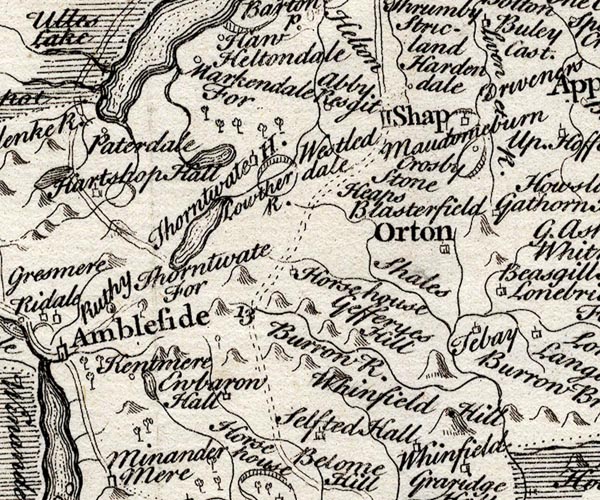
SMP2NYK.jpg
"Stone Heaps"
Near the road?.
item:- Dove Cottage : 2007.38.59
Image © see bottom of page
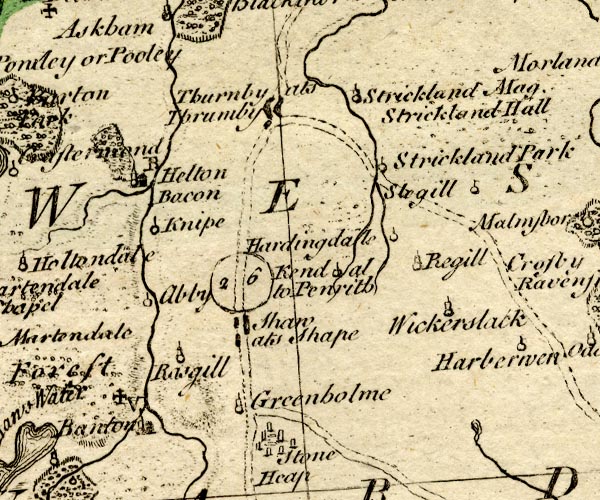
BO18NY41.jpg
"Stone Heap"
rough circle of standing stones
item:- Armitt Library : 2008.14.10
Image © see bottom of page
 goto source
goto sourcePage 174:- "... On the east side of the road, soon after you leave the village [Shap going S], observe a double range of"
 goto source
goto sourcePage 175:- "huge granites [1], pitched in the ground, and at some distance from each other, leading to circles of small stones, and increasing the space between the rows as they approach the circles, where the avenue is about 27 paces wide. They are supposed to have run quite through the village, and terminated in a point. It has long embarrassed the antiquaries what to call this very uncommon monument of ancient date. Mr. Pennant has given a plausible explanation of it from Olaus Magnus, and supposes the row of granites to be the recording stones of a Danish victory obtained on the spot, and the stony circles to be grateful tributes to the memory of consanguineous heroes slain in the action."
"..."
"[1] Since the inclosure of the common, many of these stones have been destroyed, for the purpose of making fence-walls."
 goto source
goto sourcePage 141:- "..."
"... Karl Lofts, composed of two lines of huge unhewn masses of granite, ... having at its south end a circle of similar stones, eighteen feet in diameter, ..."
item:- vandalism
 goto source
goto sourceGentleman's Magazine 1844 part 2 opp p.381
 click to enlarge
click to enlargeG844E01.jpg
"DRUIDICAL TEMPLE NEAR SHAP, WESTMORLAND"
 goto source
goto sourceGentleman's Magazine 1844 part 2 p.381 "Druidical Temple near Shap."
"MR. URBAN,"
"NOTWITHSTANDING the alleged increase in good taste at the present day, I find it is the intention of the projectors of the Lancaster and Carlisle Railway to carry their line through, and destroy, a most interesting remnant of antiquity, the remains of a Druidical Temple situated in a field the property of the earl of Lonsdale, on the road from Kendal to Shap, and about 2 miles from the latter place. I am surprised that the noble Earl should permit such barbarity, with such influence as he possesses over the Company."
"The accompanying sketch (Plate II.) of this curious monument, which will probably be in a very short time no longer in existence, may be interesting to your readers. It consists of 13 stones of Shap granite, the largest of which is 7 or 8 feet high, placed on a circle about forty feet in diameter."
"Yours, &c."
"DRUID."
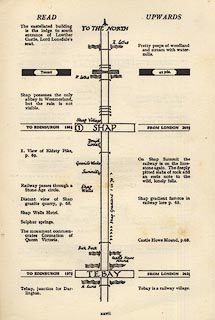 click to enlarge
click to enlargeLS3p27.jpg
"Druid Circle"
Half a circle is shown, cut by the line of the railway.
item:- JandMN : 95.2
Image © see bottom of page
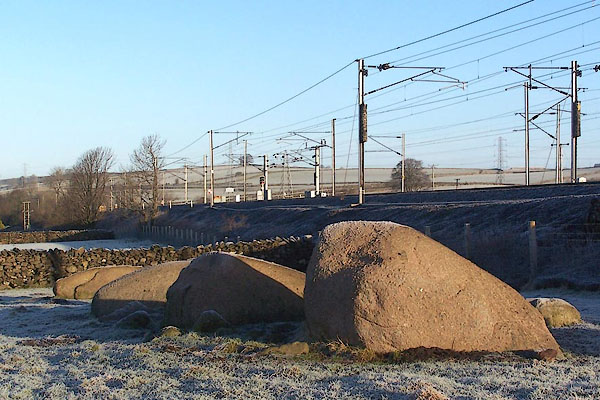
BLN11.jpg (taken 4.1.2006)
Burl, H A W: 1976: Stone Circles of the British Isles: Yale University Press (United States)
